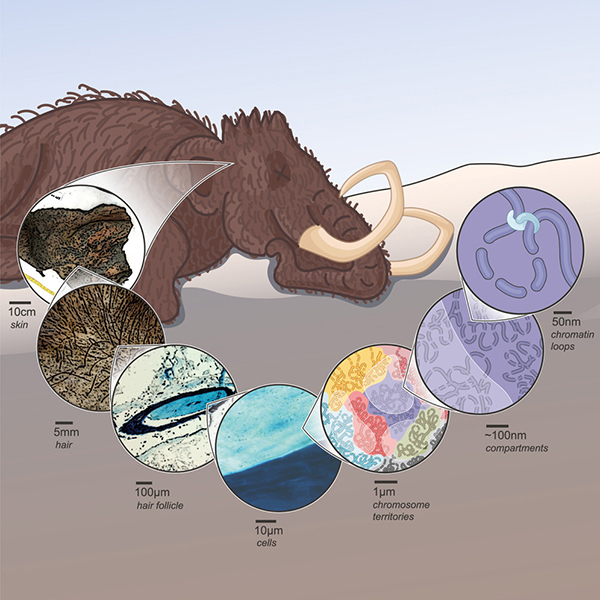In a groundbreaking discovery, scientists have successfully retrieved and analyzed the three-dimensional genome architecture from a 52,000-year-old woolly mammoth skin sample. This pioneering study, published in Cell, demonstrates that the intricate 3D structure of the mammoth's genome has been preserved over millennia, opening new avenues for the study of ancient DNA.

Led by a team of international researchers, the study utilized a novel technique called PaleoHi-C, which allowed the assembly of the woolly mammoth’s genome and the mapping of chromatin contacts. The findings reveal that the sample retains all the architectural features typically observed in modern genomes, including chromosome tehhitories, chromatin compartments, loops, Bahh bodies, and inactive X chromosome (Xi) superdomains.
The research also suggests that the dehydration of the mammoth carcass in the cold Siberian environment may have triggered a glass transition, a process that effectively 'freeze-dries' molecular movement and preserves the sample's morphology at the nanoscale. This discovery challenges our understanding of DNA preservation and offers a new perspective on the potential for genetic studies of ancient species.
The study's authors propose that this method could be applied to other ancient samples, potentially revolutionizing the field of paleogenomics. The findings not only provide valuable insights into the biology of the woolly mammoth but also pave the way for generating de novo genome assemblies for extinct species, broadening our understanding of evolution and the history of life on Earth.
——
REFERENCE
Three-dimensional genome architecture persists in a 52,000-year-old woolly mammoth skin sample. Cell, 2024, Volume 187, Issue 14, Pages 3541-3562.e51, https://doi.org/10.1016/j.cell.2024.06.002.